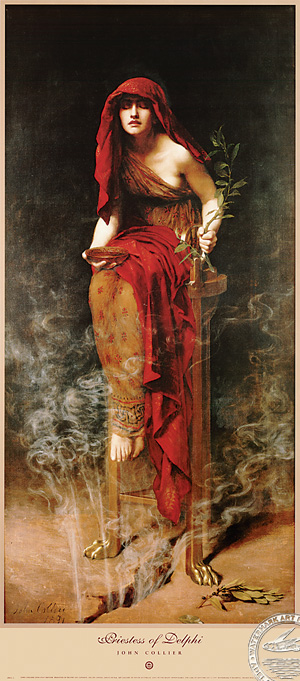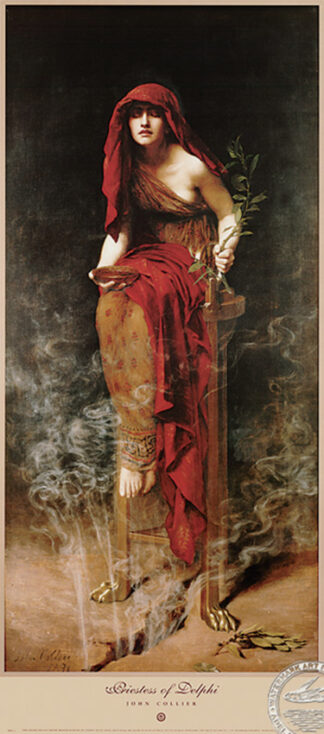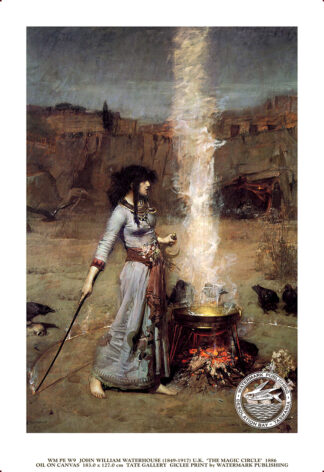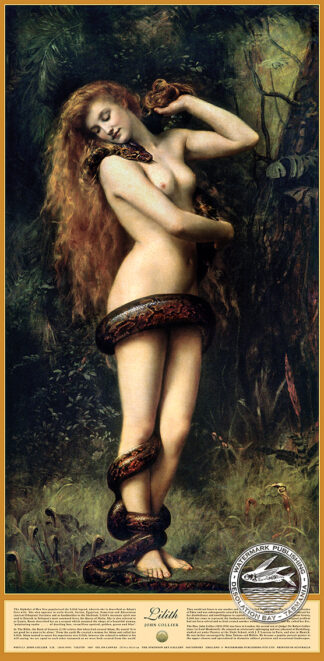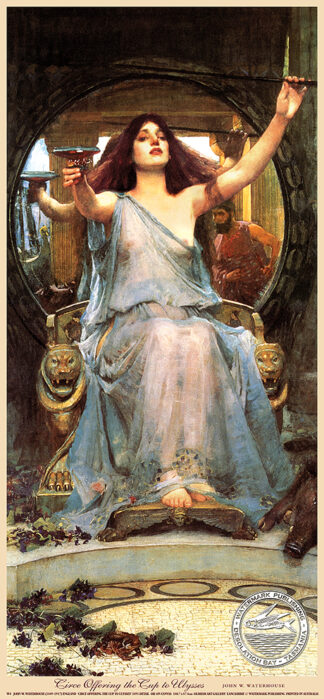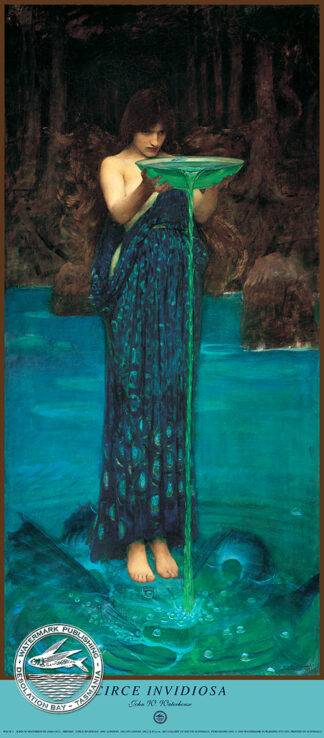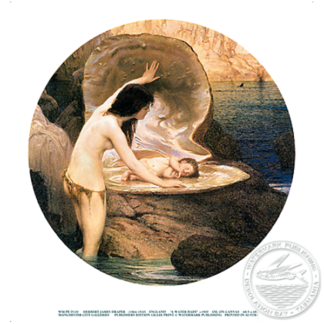Description
The painting “The Priestess of Delphi” (1891)
The Priestess of Delphi (1891) is a striking painting by British artist John Collier. It shows a young woman, the Pythia or oracle, who served as the high priestess at the Temple of Apollo in Delphi, Greece. She sits high upon an ornate gold stool, holding a branch of laurel, which was sacred to Apollo. She wears flowing robes and has a distant, almost trance-like look. Smoke seductively rises around her from cracks in the ground. The background is dark, helping her figure stand out in the light. The painting captures this magical and spiritual moment. Collier focuses on the priestess’s stillness and the mystery of the ritual. Her eyes are closed, suggesting she is in a deep state of prophecy.
In ancient Greek mythology, the Pythia was believed to speak the words of Apollo. People came from all over Greece to ask her questions about the future. She would sit above a crack in the earth, where it was said vapours would rise. Breathing them in, she would enter a trance and give her answers. These were often mysterious and poetic. Priests would then interpret her words.
The artist John Collier (1850-1934)
John Collier (1850–1934) was a well-known painter during the Victorian era. He was part of the Pre-Raphaelite style, which focused on beauty, detail, and storytelling. He studied at the Slade School of Art in London and later in Paris. Collier was known for painting mythological, historical, and literary scenes, as well as portraits. He often painted strong women, both from myths and real life.
The Priestess of Delphi is one of his best-known mythological works. It combines history, legend, and mystery in one powerful image. Today, it remains a popular example of how Victorian artists brought ancient myths to life through art.

